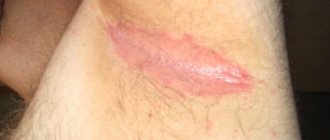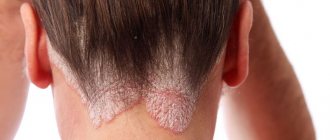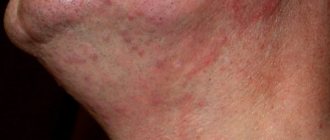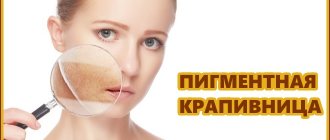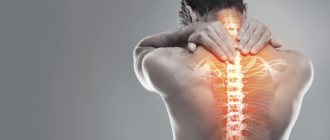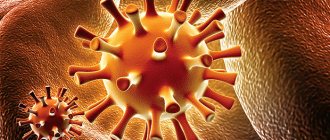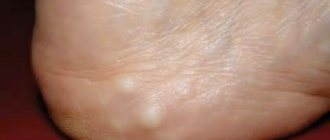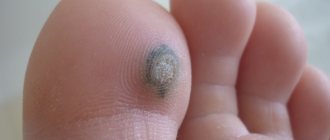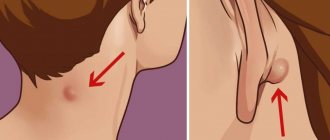Solar lichen is an infectious disease. Characteristic signs of the disease are flaky pigment spots on the skin. This lichen is a seasonal disease, and fungal bacteria reach a particular peak of activity in the spring and autumn. The risk category includes men and women under thirty years of age.
Solar lichen can be transmitted from a sick person to a healthy person only through close, prolonged contact . For the development and progression of the disease, the body must have a favorable background and predisposing factors.
Causes of sunburn infection
A fungal dermatological disease, which in medicine is called keratomycosis or multicolored, spreads only to the hair cuticles and the stratum corneum of the epidermis. The following factors may contribute to the development of the pathological process
- Disease of vegetative-vascular dystonia.
- Malfunctions of the endocrine system.
- Presence of changes in the composition of sweat or increased sweating.
- Weakened immunity.
- Exposure of the skin to stress, for example, visiting a solarium to get an intense tan or frequent visits to the beach in the summer.
- Frequent use of antibacterial shower gels and soaps can lead to disruption of the protective functions of the skin.
- Tight clothing made from synthetic materials can also contribute to the development of sunburn.
- Diabetes or obesity.
- Uncontrolled use of antibiotics.
- Tanning creams that contribute to the development of an allergic reaction and provoke the growth of fungi.
Some dermatologists argue that the manifestation of symptoms of solar lichen may indicate the presence of pulmonary tuberculosis or lymphogranulomatosis.
Solar fungus, what is it, treatment at home
14.04.2017
Each of us loves to soak up the warm sun in the summer.
But few people know that excessive exposure to the sun can cause many skin diseases. Sun fungus or solar lichen belongs to the group of infectious skin diseases.
Skin fungus begins its activity in the spring and summer. When exposure to the sun is especially dangerous for humans. The disease often affects people under 30 years of age.
The disease is called beach fungus or sun lichen. All dermatologists claim that the main reason for its development is damage to the upper stratum corneum of the epidermis by a certain type of fungus of the genus Malassezia and Pityrosporum.
The fungal pathogen can be transmitted to a healthy person from a patient through prolonged direct contact. The contact must be long-lasting. The disease itself can be considered non-contagious.
The risk of infection can be defined as the state of the human body as a whole. With weak immunity, any fungus actively develops.
It can take a long time from the moment of infection to the appearance of the first signs of the disease - several weeks. If there are favorable conditions in the body, the fungus begins to actively reproduce. There are many other reasons for the development of sun fungus.
Let us note the effect of the sun and ultraviolet radiation on the skin, because of this the disease is called “beach fungus”, “solar lichen”.
Long exposure to ultraviolet rays of the sun or solarium poses a risk of high fungal activity.
Provoking factors may be:
- vegetative-vascular dystonia;
- decreased immunity;
- obesity;
- diabetes;
- frequent infectious and colds;
- long-term use of antibiotics;
- imbalance of intestinal microflora;
- excessive sweating;
- use of low-quality skin care cosmetics;
- excessive use of sunscreens and lotions;
- presence of allergies.
Skin pigmentation appears during the warm season. Beach or sun lichen is a seasonal disease. The fungus spreads to the skin of women and men.
Complaints come from young people under the age of 25-30. But children and the elderly can get sunburn fungus.
Symptoms of sun beach fungus
Beach fungus manifests itself with characteristic symptoms. The main indicator of fungus is the appearance of uneven and asymmetrical spots on the skin. These spots have jagged edges and a rounded shape.
As for color, it can be from light milky, coffee to red.
Localization locations are varied:
- neck;
- back;
- stomach;
- breast;
- scalp in young children;
- armpits;
- limbs.
With sun fungus, inflammation of the skin is not typical. Therefore, the formation of blisters, bubbles, and elevations on the skin is not observed. There is no pain either. This disease rather brings aesthetic and cosmetic inconvenience to the patient.
If you scrub the stains a little, they may begin to peel. Over time, small spots begin to join together, forming one large continuous spot. When sunbathing, the rashes do not tan, so they are noticeable in contrast with dark, tanned skin.
There is no itching, burning or pain observed. If the patient begins to complain of discomfort, it can be argued that a secondary bacterial infection has entered the body.
People often confuse sun beach fungus with sun allergy. These diseases differ in their characteristic features. With a sun allergy, the patient experiences severe skin itching, inflammation, pain, and burning.
How to treat beach fungus
This type of fungus manifests itself with pronounced symptoms. Treatment should only be prescribed by a doctor. You should not self-medicate. This way it will only be possible to hide the manifestations a little, but the problems will not go away.
Therefore, you need to visit a dermatologist. The doctor is not limited to just a visual examination. A series of tests are required to help the specialist identify the main causative agent of the disease.
So they resort to the following research methods:
- Luminescent study. The doctor examines the spots under a Wood's lamp. These mushrooms shine in certain shades and colors.
- Dermatoscopy of spots.
- Balzer test.
- Microscopic examination of the contents from the surface of the stains.
- Test for Besnier syndrome.
- General blood analysis.
After receiving the test results, the doctor may prescribe treatment. Among the methods of treating solar fungus, one can note the use of topical medications, strengthening the immune system, and compliance with preventive measures (avoiding prolonged exposure to the sun).
Dermatologists prescribe special creams and ointments to lubricate fungal-affected skin areas.
This is what local therapy is all about. The following drugs are highly effective:
- clotrimazole;
- terbinafine;
- Sulfuric ointment;
- sulfur solution;
- resorcinol alcohol;
- naftifine;
- cycloperox;
- Lamisil.
Among modern medications, the doctor may prescribe some antifungal sprays and drops. This is at the discretion of the doctor, who takes into account the individual characteristics of the patient’s body and the course of treating the fungus with other means.
To consolidate the result and prolong the period of remission, general therapy is used. Sometimes antifungal tablets Orgunal, Fucis, ketoconazole, and itraconazole are prescribed. Taking cycloserine will help restore the usual color of the affected skin.
To strengthen the immune system, any immunomodulators are used. It is important to undergo a course of vitamin complex therapy. Such an integrated approach to the treatment of solar fungus will help the patient get rid of the problem in a short period of time.
Prevention measures
Fans of chocolate and bronze tans may be at risk. Therefore, in order to prevent the development of sun fungus, it is worth following some prevention rules.
Staying in the sun for more than an hour and a half can cause the formation of fungal pigmentation.
Among the preventive measures, the following rules can be noted:
- try to avoid visiting the solarium;
- do not use antibacterial shower gels and soaps daily;
- stay in the sun only in the morning and evening;
- In summer, be sure to use sunscreen before going outside;
- regularly strengthen your immune system;
- during the hot season, do not wear clothes made of synthetic material;
- in case of excessive sweating, treat skin folds and armpits with talcum powder;
- control the functioning of the endocrine system.
If you follow these simple rules, you can maintain the full functioning of your entire body. This will prevent the development of sun fungus.
And timely identification of the problem allows you to quickly get rid of the disease. Therefore, you need to listen to changes in the body.
Source: https://gribok24.ru/gribok/solnechnyj-gribok.html
Solar lichen and its symptoms
Solar lichen photo
The appearance on the patient’s body of a large number of asymmetrical spots of a round shape , as shown in the photo above, with scalloped, uneven or clearly demarcated edges, can be attributed to the main signs of solar lichen. The skin of a sick person begins to peel off when scratched and acquires different colors in the affected areas: yellow, dark brown, pinkish brown and coffee shades.
Sun spots do not show signs of inflammation and do not rise above the skin. Lichen spots do not cause pain or swelling. As the disease progresses, the lesions are capable of growing and can merge into a single area the size of the palm of an adult. Localization sites most often form on the back, neck, abdomen, chest, and on the sides of the torso.
Sun pigmented areas in children and adolescents may be present on the scalp, on the skin of the arms and legs, and in the armpits. , sun allergy , prolonged exposure to direct sunlight and weakened immunity may be considered predisposing factors
Treatment of solar lichen in children requires avoiding exposure to the sun from 11 a.m. to 4 p.m., the most dangerous time of day. To strengthen the body's defenses, it is advisable to diversify the child's menu and give him more vitamin foods or regular multivitamins in tablet form.
Pityriasis versicolor does not cause the patient any discomfort. If the sick person experiences unpleasant sensations such as itching, burning and soreness, this may indicate a bacterial infection. Areas of skin affected by lichen stand out noticeably against the background of the rest of the tanned skin, because tanning does not apply to these areas.
Sun fungus on the body: symptoms (PHOTOS) and treatment of beach fungus
Dermatologist of the highest category Petr Viktorovich
32925
Update date: September 2019
Sun fungus is one of the rare types of mycoses caused by opportunistic microflora. The disease got its name because it develops under the influence of ultraviolet rays.
Causes and provoking factors
Sun fungus appears as light spots on the skin
Sun fungus is harmless and non-contagious, but it can cause significant aesthetic discomfort, as it appears as light spots on the skin. The main reason for the development of sun fungus on the body is the excessive activity of the opportunistic microflora of the Malassezia species.
Malassezia is a yeast fungus that is always present in the human body, being part of the normal microflora. In addition to solar mycosis, this type of fungus causes seborrhea.
Activation of the fungus occurs under the influence of the following factors:
- endocrine disorders;
- decreased immunity;
- hyperhidrosis;
- vegetative-vascular disorders;
- synthetic clothing;
- overweight.
Decreased immunity becomes fertile ground for the exacerbation of various diseases. Against this background, various mycoses often appear, including solar fungus. Another common cause of Malassezia is hyperhidrosis or excessive sweating.
Sweat is not just water, but a number of special compounds that create a breeding ground for yeast. Under these conditions, pathogenic microflora actively multiply and infect the epidermis.
Obese people often face this problem, so excess weight is another predisposing factor.
Endocrine and vegetative-vascular disorders lead to a weakening of the protective function. This entails the development of various dermatological diseases, including sun fungus. Often, against the background of pathologies of the thyroid gland or liver, pigment spots appear on the skin. In the area around these spots, the protective function of the skin sometimes decreases, which can become an impetus for the development of fungus.
Another factor that determines the risk of developing mycosis is wearing synthetics in hot weather. In tight clothes made from non-natural fabrics, the body does not breathe. This fabric does not absorb sweat, so conditions favorable for the growth of fungus are created on the epidermis - damp, hot skin that does not receive enough oxygen. All this significantly increases the risk of developing the disease.
Features of beach fungus
Solar fungus is activated by ultraviolet light
The second name of the disease is beach fungus. This is due to the fact that solar fungus is activated only in the sun. Under the influence of ultraviolet radiation, active cell division of the fungus begins, which leads to its spread to healthy skin. Like all yeast-like fungi, the causative agent of solar mycosis develops quickly in a favorable environment.
Despite the unpleasant symptoms, sun fungus on the body is not dangerous. Pathogenic microflora of this type affects only the upper layer of the epidermis. Beach fungus “feeds” on skin pigment. At the site of its appearance, skin pigmentation is disrupted, spots of irregular shape and different shades appear.
The fungus itself is low-contagious. The risks of infection are minimal, since for the transmission of opportunistic microflora from person to person, several conditions must be met - severe immunodeficiency, susceptibility to fungal diseases, violation of the integrity of the skin in the contact area.
The average age of people who have discovered beach fungus on their skin is 20-30 years. In children, the disease is very rare; in patients of the older age group, beach sickness is practically not registered.
Women are more likely to experience the disease than men. This selectivity is associated with hormonal levels, since yeast-like fungi are very sensitive to fluctuations in hormone levels.
What does sun fungus look like?
The main symptom is small white spots
Beach fungus appears as small white spots on the body. At the beginning of the development of the disease, they appear locally, then they can unite into large spots of irregular shape.
Often, one small spot first appears on the skin, which quickly grows, and small spots appear around it, no larger than a match head.
The large spot in this case is called the “maternal” spot, since it represents a concentration of pathogenic microflora, the colonies of which slowly spread to healthy skin.
Apart from aesthetic discomfort, beach fungus does not cause any inconvenience. The spots do not itch, do not swell, and do not rise above the rest of the epidermis. The only manifestation of sun fungus is a pigmentation disorder associated with the destruction of skin pigment.
Despite its apparent safety, the disease must be treated; it will not go away on its own. For some people, the symptoms of the fungus decrease during the cold season, but reappear the first time the skin comes into contact with ultraviolet light.
The “favorite” places for the fungus are the back, chest, and décolleté. This localization is explained by the fact that these areas sweat profusely and often come into contact with the sun, unlike other parts of the body.
Sun fungus appears very rarely on the legs due to the drier epidermis. Typically, the appearance of spots on the legs is recorded in people with an advanced form of the fungus.
In this case, the pathogenic microflora does not primarily affect the skin of the legs, but spreads to it from the back or chest.
Sun fungus will not go away on its own. It must be treated with special means, otherwise there is a high risk of severe skin pigmentation disorders.
A neglected beach fungus can completely destroy the cells that produce skin pigment, making it impossible to restore the original color of the affected epidermis.
Diagnostics
If signs of illness appear, be sure to consult a doctor
Summer spots of the epidermis or beach fungus, treatment of which is started in a timely manner, are reluctant to leave the skin, so the sooner the patient sees a doctor, the easier the therapy will be.
Diagnosis comes down to a visual examination, medical history and examination of skin scrapings. First of all, the doctor will be interested in the time of appearance of the spots. If changes in pigmentation are associated with the hot season, this is a reason to suspect beach fungus.
The doctor will then perform a visual examination and examine the skin using special equipment. This is necessary to assess the condition of the skin. Destruction of the keratin layer is a characteristic feature of the behavior of solar fungus. Additionally, a Wood's lamp is used. The presence of pathogenic microflora on the skin is determined by the characteristic glow of the epidermis.
To accurately determine the type of pathogen, it is necessary to take a skin scraping. The analysis will make sure that mycosis is caused by opportunistic yeast microflora. Further treatment depends on the degree of skin damage. Therapy is usually carried out using external agents.
How to treat fungus?
Treatment of skin affected by a fungal disease begins with stopping contact with sunlight, under the influence of which the beach fungus actively multiplies. If the disease is localized on the body, it is recommended to cover the affected areas with clothing, avoiding exposure to ultraviolet radiation. In this case, clothing should be made of soft, breathable materials.
If spots appear on your face, you can use sunscreen. This minimizes the negative effects of the sun. It is not advisable to apply cream to the body if you have a fungus if you can cover the skin with clothing.
The fact is that all sunscreens have a too heavy structure and form a thick film on the skin. This prevents the flow of oxygen.
Directly to destroy existing colonies of the fungus, external agents are used - ointments, creams and gels with antifungal action.
Drug treatment
Local medications are usually used, and tablets are prescribed only for severe damage
You can get rid of sun fungus using both antifungal agents and products containing microelements designed to treat seborrhea and dermatitis.
Antifungal medications should contain clotrimazole or ketoconazole. These substances are characterized by pronounced activity against yeast fungi, and ketoconazole eliminates Malassezia spores well, therefore it is often prescribed for the treatment of seborrhea. In the treatment of solar fungus, broad-spectrum agents are also used, which are used in the treatment of mycoses.
The following drugs are effective against skin spots:
- Clotrimazole;
- Ketoconazole;
- Candide;
- Terbinafine;
- Pimafucin.
All these products are available in the form of a cream or ointment. The product is applied in a small layer to the affected area, capturing part of the healthy epidermis around each spot. This will prevent further spread of the disease. Treatment is carried out 1-2 times a day.
The anti-fungal ointment or cream should be absorbed on its own. Bandages or compresses should not be used.
Additionally, it is recommended to use products containing zinc or selenium. Such drugs effectively eliminate yeast fungi. For treatment, you can use anti-dandruff products and ointments containing these substances:
- Desitin;
- Zinc ointment;
- Tsindol;
- Sulsena.
These products are applied to the skin once a day in a thin layer. Several hours should pass between treating the skin with an antifungal cream and a product with zinc or selenium so that the components of the ointment have time to be completely absorbed into the skin.
Folk remedies
Rosehip oil is known for its ability to boost immunity
With minor damage to the epidermis, you can cope with the help of folk remedies. If the skin is severely affected by the fungus, traditional treatment methods can be used in addition to drug therapy to enhance the therapeutic effect.
- Sea buckthorn oil stimulates skin restoration and keratin production. They can be used to lubricate sun fungus spots. The product is applied using a cotton swab directly to the affected area. The only downside is that the oil turns the skin orange.
- To treat fungus, you can use a homemade paste. To do this, mix a spoonful of baking soda with a spoonful of water, apply the product to the skin, leave for 5 minutes, and then rinse with water.
- Lemon juice will help stop the progression of the disease. You need to moisten a cotton pad in it and apply it to the affected skin for a couple of minutes. Treatment with lemon juice should not be carried out on exposed areas of the body exposed to sunlight to avoid hyperpigmentation.
- Rosehip oil is no less effective in the fight against skin diseases. It perfectly improves local immunity, so it can be used as part of complex therapy. The product must be applied to the skin in a thin layer and left until completely absorbed.
- Vinegar compresses will help defeat the fungus. To do this, mix apple cider vinegar and water in equal proportions, apply to a cotton pad and apply it to the stains for 10 minutes. Pure vinegar should not be used to avoid skin burns.
Additionally, you can use various general strengthening agents. Echinacea tincture or infusion boosts immunity and helps to quickly cope with skin disease. You can prepare them yourself or buy them at the pharmacy. Echinacea tablets and injections are also used to stimulate the immune system.
Another effective folk tonic is rosehip infusion. To prepare it, you need to pour two large spoons of berries into a thermos and pour 500 ml of boiling water. After two hours of infusion, the product should be taken half a glass in the morning and evening.
Prevention
Proper nutrition will help prevent the development of sun fungus
To prevent the development of sun fungus, attention should be paid to immunity, both general and local. It is necessary to eat right, wear clothes made from natural fabrics and not go outside during the hours of maximum solar activity without sunscreen applied to the skin.
Since hyperhidrosis can provoke the development of sun fungus, this disorder must be treated. To do this, you should consult a dermatologist about prescribing medicinal antiperspirants.
People prone to sun fungus should avoid aggressive cosmetics, antibacterial soaps and alcohol-containing lotions. These products greatly dry the skin, disrupt its natural defenses and reduce local immunity.
Source: https://gribokinfo.com/vidy-gribka/solnechnyy-gribok-na-kozhe/
How to treat solar lichen
A dermatologist, after a visual examination and dermoscopy tests of the affected areas, can easily diagnose pityriasis versicolor. If the doctor is in doubt, additional tests may be prescribed using a fluorescent lamp , scrapings of the epidermis of the skin, and others.
To exclude the presence of other similar diseases, you may need to undergo an RPR test and PCR diagnostics, as well as exclude the presence of Treponema pallidum by ordering a microscopic scraping analysis.
Treatment of solar lichen is carried out on an outpatient basis and is carried out until the symptoms of the disease completely disappear. Treatment of lichen begins with local antifungal agents. If the solar pathological process spreads and relapses, the doctor may prescribe the use of systemic medications.
For local treatment of lichen lesions, the following is often prescribed:
- 5% salicylic ointment.
- 10% sulfur ointment.
- 5% salicylic alcohol.
- Mycozolon.
- Clotrimazole.
- Lamisil.
- Cycloperox.
- Bifalazole.
When choosing a drug for the treatment of lichen, it is better to opt for antimycotics, released in the form of sprays, lotions or solutions . The drug is applied evenly to the areas of the skin affected by sunburn and rubbed in with light massaging movements.
Treatment with drugs in the form of a cream will not create a greasy film on the skin, which is an excellent option for the warm season. Lotions and sprays promote uniform application to the skin surface, regardless of the affected area and location of the focal areas. Treatment is achieved by treating every millimeter of the affected areas with drugs.
To prevent relapses and general treatment of lichen, systemic antifungal agents such as ketoconazole, itraconazole, orungal are prescribed. These drugs help improve the patient’s overall well-being and speed up his recovery. To get rid of lichen pigmentation, cycloserine is used.
To avoid complications, you should not self-medicate. Traditional methods of treatment for solar lichen do not have the desired effect and most often turn out to be useless. Only an experienced dermatologist can be trusted to draw up a treatment regimen and prescribe the dosage of antifungal drugs taken.
Most often, doctors prescribe complex treatment for lichen according to the following principle:
- Local therapy using traditional medicine.
- Taking general strengthening medications.
- Application of preventive measures.
Prevention methods
Therapy is carried out at home. The treatment regimen is selected on a strictly individual basis, taking into account the patient’s age and laboratory test results.
It must include:
- systemic antifungal agents (Fluconazole);
- ointments for local treatment with the same effect (“Exoderil”, “Nizoral”, “Clotrimazole”);
- keratolytic preparations - means with which you can exfoliate the affected layer along with the pathogen (“Arievich ointment, 50% ointment with urea);
- zinc-based medications (“Skin-cap”, “Psorilom”).
If the patient's affected areas are on the scalp, they are recommended to use antifungal shampoos (Perhotal, Dermazol) to wash their hair, and then apply antifungal ointments.
Treatment will not be effective if the patient does not adhere to the following rules:
- It is important to shower twice a day every day.
- After water procedures, it is better to wet the body rather than rub it with a towel; after each use, the towel should be washed in the “boiling” mode.
- It is important to dress according to the weather, choose clothes in which the body will not sweat too much.
- During treatment, try to avoid physical activity that can cause increased sweating.
- Change your underwear daily and iron it before putting it on.
- Do not scratch the skin affected by spots under any circumstances.
- You should not be in the sun for more than two hours at a time.
- When going outside, it is useful to apply special sunscreens to exposed areas of the body.
- If you have sunburn, you should not use scrubs or any other aggressive means intended to cleanse the skin.
After completing the course of treatment, it is useful to pay attention to strengthening the immune system. It is important to accustom yourself to wearing clothes made from natural fabrics and to regularly wipe your skin with salicylic alcohol to prevent relapses. If you manage to stop an attack of solar lichen, doctors strongly recommend refusing to visit the bathhouse and solarium.
Traditional treatment is not able to effectively combat yeast-like fungi. But with its help you can try to enhance the effect of medications or prolong it. Fungal spores can remain in the epidermis even after treatment, be there in a state of rest and wait in the wings. Therefore, it makes sense to use some prescriptions after completing the drug course.
Has good antimicrobial properties:
- Rosehip and sea buckthorn oil. Their use alternates at weekly intervals. First, using one of them, the affected areas of the skin are lubricated three times a day, then the other is connected.
- Apple vinegar. Has a pronounced antifungal effect. To achieve a therapeutic effect, it is necessary to lubricate the spots every three hours for several days in a row.
- Alcohol tincture of calendula. It is prepared from 100 grams of dry raw materials and 500 ml of good vodka. Both ingredients are combined, the product is infused in a dark place for two weeks, then filtered and used to wipe stains. This should be done every two to three hours.
- Onion juice. It also has good antimicrobial properties. It helps stop the proliferation of yeast-like fungi. To do this, rub the juice into damaged skin once a day.
- An ointment made from St. John's wort and petroleum jelly (dry medicinal herb powder is mixed with the second ingredient in 1x4 proportions).
- An ointment prepared from a herbal mixture and petroleum jelly (crushed burdock root (2 tbsp), calendula flowers (10 pieces), hop cones (10 pieces) are mixed in a glass of cold water, the finished mixture is simmered over low heat for twenty minutes , then cools, filters and combines with one hundred grams of vaseline oil). The resulting ointment is used to treat skin that recently had characteristic spots.
- Ointment made from butter and dry rue herb (the ingredients are taken in a ratio of 1x3, mixed and used to treat the skin).
DETAILS: Gastritis: symptoms and treatment in adults
Before using the products, be sure to test for an allergic reaction.
Since solar (beach) lichen has a tendency to recur, it is necessary to constantly monitor the condition of the skin and prevent the occurrence of triggers that can provoke a new attack. To do this, when bathing in the shower, use gels that do not irritate the skin instead of soap.
It is important to carry out treatment immediately after its detection, since in an advanced form it may become necessary to use potent drugs. If not treated correctly, the disease can even become chronic, with regular relapses, which will manifest themselves mainly in the summer.
Therapy consists of taking effective antifungal agents. The doctor may prescribe Ketoconazole, Miramistin, Orgunal, Clotrimazole, Itraconazole, Nizoral, etc. The above drugs significantly improve the patient’s condition, relieve itching and speed up the healing process, and also prevent relapses. To get rid of pigmentation, Cycloserine is usually used, which inhibits transaminase.
If topical treatment does not have the desired effect, your doctor may recommend taking antifungal agents. Injection of medications is usually not required for this disease.
When people develop solar zoster, how to treat it is the most important question. Salicylic acid, which is applied to the affected areas of the skin several times a day, will help get rid of skin discoloration.
Getting rid of the disease is a very long process, so you should not assume that the natural shade of the skin will be restored in a few days. The patient also needs to adhere to a diet: limit the consumption of fatty and fried foods, do not drink strong coffee and alcohol. Eat more greens, legumes, fresh vegetables, dairy products, grains, fruits and sea fish.
Folk recipes
You can supplement (but in no case replace!) the treatment prescribed by the doctor by using proven home remedies with a gentle effect. Unfortunately, some patients decide to undergo treatment on their own, but if the result does not appear after a while, they still turn to a specialist. During this period of time, lichen often acquires a chronic form, then reducing its manifestations will be very difficult.
Before looking for ways to cure the disease, you need to consult a dermatologist! There are many ways to cure solar lichen at home, but we will present the most effective and inexpensive of them.
Affected skin should be treated with undiluted sea buckthorn oil. For greater effect, the oil can be added to a nourishing cream. This remedy has a calming and healing effect.
Rosehip infusion will help strengthen the immune system and give the body strength to fight the disease: pour 2 tbsp into a thermos. l. fruits, pour 500 ml of boiling water over them, after 2 hours strain the drink. You need to take it orally 2 times a day, half a glass.
Also, stains can be treated with infusion of horse or wild sorrel. To prepare the remedy, you need to finely chop the leaves and mix them with 1 tbsp. l. fat sour cream. The resulting paste is applied to the skin for 15 minutes, after which it is thoroughly washed off. Additionally, you can wipe stains with rosehip oil.
The disease has pronounced symptoms, but you should not prescribe treatment yourself. Do not use antifungal ointments until you consult a doctor. You can “smear” the manifestations, causing uncontrollable changes in the skin with improper therapy.
Visit a dermatologist. In most cases, the specialist does not limit himself to a visual examination, but prescribes additional tests. Specific studies will help make an accurate diagnosis:
- dermatoscopy of solar lichen spots;
- luminescent diagnostics. Under a Wood's lamp, which is used to determine many dermatological diseases, pathogenic fungi glow with certain colors and shades;
- Balzer iodine test. After the test, the affected skin looks much darker than healthy areas;
- microscopic analysis of the contents taken from the stain area. After tests, the causative agent of a fungal disease is detected in particles of the epidermis;
- test confirming Besnier's symptom. In case of pityriasis versicolor, even a slight impact produces results - the scales of the epidermis are suitable for research. It is very difficult to collect particles of the stratum corneum from healthy skin;
- A general blood test is required.
Sometimes PCR diagnostics are required to differentiate from other skin diseases. If syphilis is suspected, an RPR test is performed to confirm or refute the presence of Treponema pallidum.
How to get rid of sun lichen? Main methods of treatment:
- local therapy;
- use of traditional medicine recipes;
- prescription of general strengthening drugs;
- preventive measures.
Dermatologists recommend treating affected areas with safe products that have proven their effectiveness. Your doctor will prescribe one of the local remedies that suits you.
Lubricate lichen spots:
- Resorcinol alcohol;
- Clotrimazole;
- Salicylic ointment;
- Terbinafine;
- Sulfur ointment;
- Cycloperox;
- Naftifin;
- Salicylic alcohol;
- Lamisil.
Among the names of antifungal agents are creams, solutions, and ointments for sun lichen. Some drugs are available in different concentrations, for example, resorcinol alcohol, sulfuric ointment, salicylic ointment. Only the doctor decides which medicine to give preference to.
Taken into account:
- test results;
- affected area;
- individual tolerance of certain antifungal compounds.
Most dermatologists recommend modern antimycotic drugs in the form of solutions, lotions, and sprays. Advantages:
- high-quality treatment of every millimeter of lichen spots;
- uniform application regardless of the location of the affected areas;
- absence of an oily film on the skin, which is created by preparations in the form of a cream. In the warm season, this factor is very important.
Prevention of sun lichen
as preventive measures :
- Avoid frequent visits to the solarium.
- For daily use, do not use antibacterial shower gels and soaps.
- In summer, it is better to be outside in the morning and evening hours, and to be in the shade more during the day.
- After treatment, it is advisable to use a protective cream against ultraviolet radiation in the warm season, applying it to all exposed areas of the body.
- You should not wear clothes made of synthetic fibers in summer.
- Skin folds and armpits in case of excessive sweating should be treated with a decoction of oak bark or talcum powder.
- Diseases of the endocrine system, heart, and also strengthen blood vessels should be treated in a timely manner.
- When visiting the beach, it is recommended to use only your own towel and sun lounger, do not lie on bare sand and take a shower after returning from the beach.
During treatment of lichen and after it, it is not recommended to use aggressive skin cleansers, such as peeling, scrub and others.
Solar lichen on the body
Folk remedies
Supplement your therapy with proven home remedies. Do not replace, but complement. Unfortunately, not all patients follow these recommendations; they self-treat with herbs and ointments and wonder why there is no result.
Only after consultation with a dermatologist can you use traditional medicine recipes. Remember - the basis of treatment is antifungal ointments, and if necessary, systemic therapy.
How to cure sunburn at home? Proven recipes:
- sea buckthorn oil. Treat affected skin with undiluted product 2 times a day. You can add a few drops of healing oil to any nourishing cream and lubricate lichen spots. Sea buckthorn oil has a healing, soothing effect;
- rosehip infusion. An excellent remedy that strengthens the immune system. Pour 2 tbsp into a thermos. l. fruits, pour in 0.5 liters of boiling water. After two hours, strain the infusion. Take half a glass orally twice a day. Some herbalists recommend treating spots with “sun fungus” with infusion;
- wild or horse sorrel. Finely chop a bunch of leaves and combine with a tablespoon of sour cream. Apply the paste onto the stains and wash off after 15 minutes;
- Apple vinegar. Only a high-quality product is suitable for treating lichen spots. Every three hours, wipe away any blemishes on your body with apple cider vinegar. Watch the reaction. If itching or severe peeling occurs, stop the procedure;
- rosehip oil. Buy healing oil at the pharmacy. Apply to affected areas twice daily.
DETAILS: Urolithiasis symptoms and treatment in men
To prevent this disease from darkening your mood, it is not recommended to be on the beach during the day before 16:00, as UV radiation is very high at this time. It is necessary to avoid prolonged visits to the solarium, and also not to frequently use antibacterial care products.
It is recommended to sunbathe not under the scorching sun, but a little in the shade, in the morning or evening. But if a person likes an intense tan, it is imperative to use a high-quality sunscreen. Additionally, the patient needs to strengthen the immune system and blood vessels, as well as treat the heart.
In summer, you should choose clothes with a natural composition of fabrics that will not change the properties of sweat and prevent increased sweating. If, nevertheless, sweat begins to stand out intensely, the armpits should be sprinkled with talcum powder or powder, and also washed with oak bark infusion.
Undoubtedly, it is better to prevent the development of any disease than to treat it later. Therefore, you should not try too hard to tan: you need to do it gradually. The main thing is to make an accurate diagnosis as quickly as possible and begin treatment so that the disease does not become chronic!
Let's take a closer look at how to cure sunburn at home.
- Celandine should be placed in a gauze bag, add 1 glass of sugar, leave the mixture for a month, take 50 g 3 times a day. The product must be used carefully; although the plant has antibacterial properties, in large quantities it can be poisonous to the body, so exceeding the dosage is strictly prohibited.
- Birch tar is used not only for pityriasis versicolor, but also for the treatment of other skin diseases: mycosis, dandruff, allergies and others. It was added to shampoos and soaps. Tar should be smeared on the affected areas of the body. The downside of the product is that when it gets on clothes, it forms stains that are difficult to remove. It is good to purchase tar gel and use it to normalize the pH balance of the skin.
- Sorrel is also good for sunburn. 1 tbsp. l. you need to pour a glass of boiling water, boil for 5 minutes, leave, and then strain. Apply the decoction to the affected areas.
- You can wipe stains with calendula tincture, onion juice, cranberry juice, burdock oil, and apple cider vinegar. Damage should be lubricated at least twice a day to achieve the desired result.
Birch tar is used in the treatment of skin diseases
Treatment of sun lichen at home will be successful if you pay attention to the disease in the early stages and take action in a timely manner.
Folk remedies for sun lichen:
- Aloe has many beneficial properties. In particular, it can be used in the treatment of various skin infections, including fungal infections. A small amount of aloe gel should be applied to cleansed areas of skin where the rash has appeared twice a day. There is no need to wash it off. Aloe can be used to treat sun fungus for several weeks at a time.
- Rosehip decoction - pour 1 tablespoon of the fruit with a glass of boiling water, leave, strain and use the infusion to wipe the affected areas. In addition, rosehip decoction can also be taken orally. This drink is rich in vitamin C and helps strengthen the immune system.
Causes and provoking factors
Sun pityriasis is caused by pathogenic fungi that belong to the genus Malassezia and Pityrosporum. The infectious agent is transmitted from a sick person to a healthy person during their direct contact. With minor touching, the risk of infection is minimal.
People who have health problems associated with a weakened immune system can become infected with sun fungus. If the body does not have the ability to protect itself, then the infection easily penetrates it.
From the moment the fungus enters the body until the first clinical manifestations of the disease appear, a fairly long period of time passes. It can last for weeks. Pathogenic microflora can actively multiply and grow only if favorable conditions are created for this.
There are many reasons that explain the defeat of a person by sun fungus. The following factors lead to the development of the pathological process:
- Prolonged exposure to the sun and ultraviolet rays on unprotected skin;
- Severe decrease in immunity;
- Having excess body weight;
- Vegetovascular dystonia;
- Diabetes;
- Frequent colds;
- Excessive level of sweating;
- Long-term treatment with antibiotics;
- Abuse of creams and lotions with sunscreen properties;
- Allergic reaction.
The solar type of fungus is one of the seasonal diseases. It appears in the warm season. Ringworm affects the skin of both women and men equally. Most complaints about signs of an infectious disease come from young people aged 25 to 30 years. However, this does not mean that the elderly and children cannot get sunburn.
As the name suggests, sun fungus appears after sun exposure.

